Introduction
In his unpublished autobiography, preserved in the Richard L. D. and Marjorie J. Morse Department of Special Collections at Kansas State University, George Washington Owens describes how the son of former slaves was raised and educated on the Kansas prairie in the late nineteenth century to play an important role in the agricultural program at Tuskegee Institute in Alabama under the direction of Booker T. Washington and the tutelage of George Washington Carver. From Tuskegee, Owens went to Virginia Normal and Industrial Institute (now Virginia State University) in 1908 where he worked for thirty-seven years to become a prominent leader in the field of agricultural education in the South.
After their emancipation, Owens’s parents, Samuel F. and Anna M. (Gordon) Owens, left Tennessee by riverboat in the early 1870s and arrived at Westport Landing in Kansas City, Missouri. From there they traveled by covered wagon to Ft. Scott, Kansas. It was not long before their desire for free land led them to Wabaunsee County where they obtained a tract of public land approximately five miles northwest of Alma, Kansas. Their son, George Washington Owens, was born at that location in 1875.
According to the 1880 Kansas Census, George was the second of five children (Edward, age 8; George, 6; Linda, 3; Emma, 1, and Lizzie, 3 months) born to Samuel and Anna Owens in Kansas. By 1885, he had two additional brothers, Sam and Freddie. Samuel and Anna continued to live in Wabaunsee County where George’s mother died of cancer in 1894 and his father of tuberculosis in 1907.
George attended District School #3 of Alma Township as the Owenses’ family farm was not far from the school. George graduated in the spring of 1890. Although larger cities maintained segregated elementary schools, his was integrated as Alma included a large number of African Americans, many of whom were Exodusters and ex-slaves. However, at the time that George attended, he and his siblings were the only African American pupils enrolled.
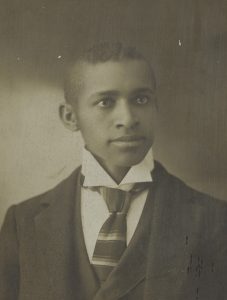
After graduating from high school, Owens entered Kansas State Agricultural College (now Kansas State University) in January of 1896 at the age of 21. He did so at the urging of Charles Smith, a high school teacher in Manhattan who boarded on a farm near St. Marys where George worked one summer. When George discovered that he was the only African American among the approximately six hundred students at K-State, and a “colored student” had never graduated from the college, he “resolved to be the first.”
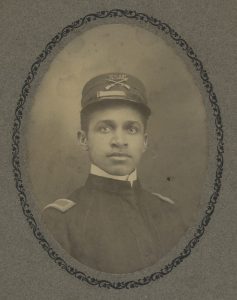
Owens was an accomplished student at K-State, and by all accounts, he was accepted as a peer and engaged in college activities. For example, as a member of the Webster Literary Society, Owens was one of seven students whose photographs and presentations at the organization’s annual program in March 1899 were published in the college newspaper, The Students’ Herald. The oration presented by Owens was entitled “The Right to be Understood.” Referring to the Civil War, Owens remarked, “While we regard the rebellion of the South a folly, we must not forget that the southern people also earnestly believed that they were right. A mutual understanding might have accomplished the emancipation reform peaceably.” Although he struggled to work his way through college on the school’s farm and as a janitor, Owens succeeded, earning a BS degree with high marks in June 1899. The title of his senior thesis was “Dairy Form as an Index to Character.”
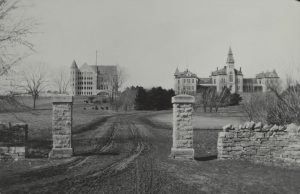
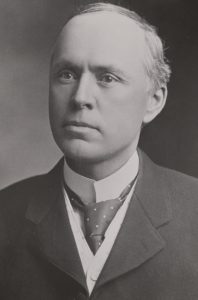
It is interesting to note that by the time he graduated there was at least one other African American student in attendance, Minnie Howell of Manhattan, who became the first African American female to graduate in 1901. Owens accomplished his goal of becoming K-State’s first African American graduate! At that time he received a letter from Booker T.
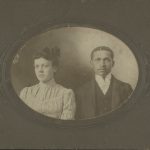
Washington, founder of Tuskegee Institute in Alabama, offering him a position under George Washington Carver, head of the agriculture department. Owens accepted and arrived at the school during the fall of 1899. While at Tuskegee he implemented numerous improvements in the agricultural program, especially as head of the dairy herd. He also met and married Waddie L. Hill, a graduate of Clark University in Atlanta, and they started a family of four children, one of whom died shortly after birth.
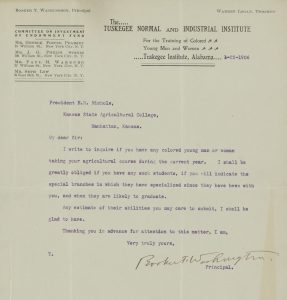
Owens made a very favorable impression on his superiors at Tuskegee, including Booker T. Washington. On occasion, Washington wrote Ernest R. Nichols, president of K-State, inquiring if there were any “colored” graduates he could recommend for employment at Tuskegee. Although replies from Nichols to Washington indicate that none were forthcoming, Washington hoped that there were others at K-State who could follow in Owens’s footsteps.
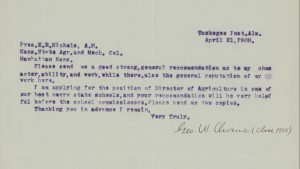
His success at Tuskegee allowed Owens to obtain a position at Virginia Normal and Industrial Institute in Petersburg in 1908 to lead the agricultural program. Owens used President Nichols as a reference to assist with obtaining the appointment. Nichols was professor of physics while Owens was at K-State. He took physics his senior year so it is safe to assume that Owens was a student in at least one of Nichols’s classes. Nichols became acting president the month after Owens graduated and president in June 1900. VNII became Virginia State College for Negroes in 1930, Virginia State College in 1946, and Virginia State University in 1979.
In 1945–46, Owens wrote the remembrances of his childhood days in Kansas and his years at K-State, Tuskegee, and Virginia State. He passed away in 1950. The following is a verbatim transcription of his handwritten autobiography beginning with the arrival of his parents in Kansas through his years at Tuskegee. The manuscript, along with other documents and several photographs, was donated to the University Archives at Kansas State University in 1978 by Owens’s daughter, Ana Elnora Owens.

